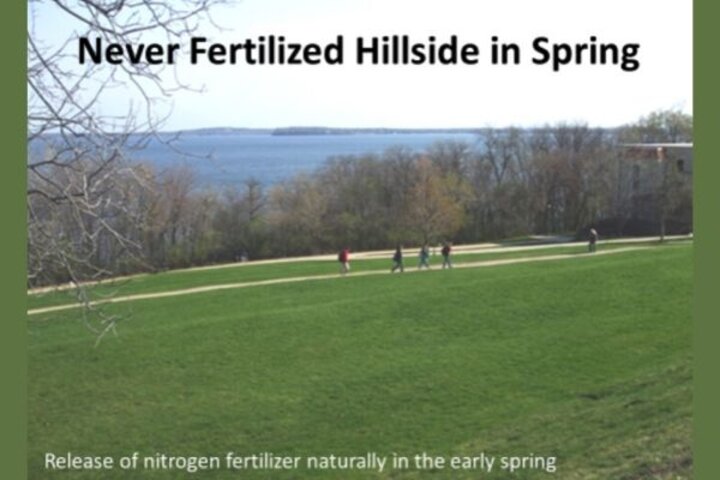To Fertilize or Not To Fertilize?
“To be, or not to be? That is the question—Whether 'tis nobler in the mind to suffer The slings and arrows of outrageous fortune, Or to take arms against a sea of troubles, And, by opposing, end them?”
This famous quote by William Shakespeare from the play Hamlet provokes the question in the endeavor of lawn care of “to fertilize or not to fertilize?” and then of course, when, how much and which type should be applied naturally follows.
The answer can be categorized in many ways, considering the age of the lawn, the suitability and health of the soil (yes, soils can be healthy or unhealthy), the desired level of thickness and green color, the need for something to intercept surface water runoff and the importance of a recreational surface. All of these factors lead to a recommendation for a “middle ground” approach, one that can be tweaked upwards or downwards based on the desired outcome.
For most “middle aged” lawns, beginning in late April with a light application of nitrogen (N) will suffice. What does “light” mean? Typically, about a fourth of pound of N per 1,000 sq. ft. That’s it. Why? In spring, lawns go through a natural post winter mineralization, aka a natural release of nutrients. So, why would you want to add more? You wouldn’t. The exception would be if the lawn is still really struggling and yellow when all of the other nearby lawns are greening up nicely. This is illustrated in the photo below. Photo credit: Bill Kreuser, UNL

A common sense approach for cool season lawns (Kentucky bluegrass, perennial ryegrass, tall fescue) is as follows:
Late April – very light N application, possibly in combination with a preemergence herbicide product.
Late May – moderate N application, again, possibly in combination with a preemergence herbicide product, timed after the spring growth surge has slowed down.
Mid to Late Summer – moderate N application, organic or slow release N source, to irrigated lawns only.
Mid to late October – a light N application of a fast release source to be completely absorbed and used by the plant before the onset of winter.
*A hint for applying a light application - If the bag of fertilizer weighs 20 pounds, and is meant to cover 5,000 sq. ft. , apply about 5 to 6 pounds instead of the whole bag.
Actually, the best way to know how much product to fertilize with is to do some simple and quick math. If it’s late April and fourth of a pound is called for, simply divide 0.25 by the nutrient analysis on the fertilizer product bag…a typical one is 21-2-5. For example, 0.25 divided by 0.21. This results in our final amount to be applied to 1,000 sq. ft – 1.2 pounds. Then, multiply 1.2 pounds by the number of 1,000 sq. ft. units in the lawn; by 5 if it’s a 5,000 sq. ft. lawn; ie. 1.2 x 5 = 5.95 pounds of product needed.
Bottom lines – 1. Fertilizer should be applied when it is needed and only to actively growing turf. And 2. It’s much easier to calculate how much fertilizer to apply than it is to calculate your IRS tax return.
This article was reviewed by Nicole Stoner